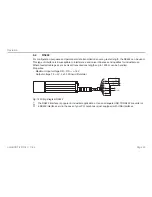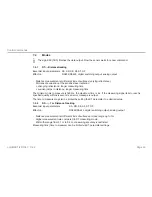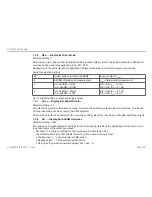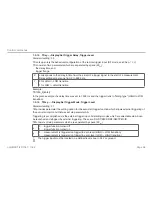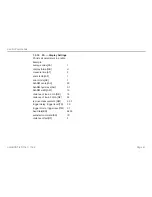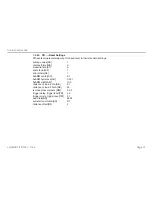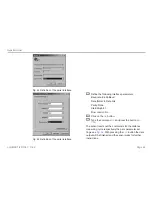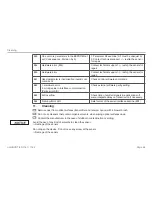
Page 33
Control Commands
optoNCDT ILR 1181 / 1182
Method
Every new measuring value is added, the first (oldest) measuring value is taken out of the averaging.
Example with N = 7:
.... 0 1 2 3 4 5 6 7 8
gets to Average
value
n
.... 1 2 3 4 5 6 7 8 9
gets to
Average value n + 1
7.3.3
SDd......Display/Set Display Format
Standard setting: d
SD switches between decimal (d) and hexadecimal (h) output format of measured value data. SD affects all
commands that output a distance value.
A hexadecimal output value is calculated from a given measured distance value (in mm), multiplied by the
scale factor SF.
Negative distance values are output in two’s complement notation.
Example:
Distance = 4.996 m, SF1
dec: 4.996
hex: 001384 (= 4996 mm × SF1)
Distance = 4.996 m, SF10
dec: 49.960
hex: 00C328 (= 49960 = 4996 mm × SF10)
7.3.4
STx......Display/Set Measuring Time
Standard setting: 0
Measuring time is directly conditional on the selected measuring mode. As a general rule, one may say: the
poorer the surface reflectance of a selected target, the longer the sensor will take to determine a given dis-
tance with specified accuracy. For example, if error message E15 is output because of poor reflectance and
insufficient time to measure, this latter setting must be increased.
- Value range ST: 0 ... to 25
- The greater the time setting is the more time will be available for measurement and the lower the resulting
measuring rate.
- An exception therefrom is zero-value. In this case, the sensor automatically picks the smallest possible
time value for measurement!
- The sensor comes factory-set with ST = 0.
- ST is effective in the DT, DS, DF and DM modes.
2+3+4+5+6+7+8
7
3+4+5+6+7+8+9
7




